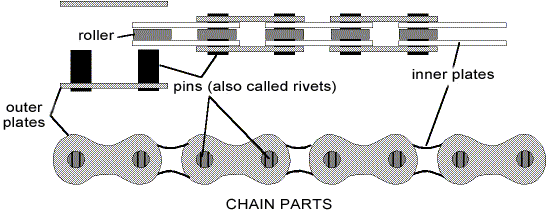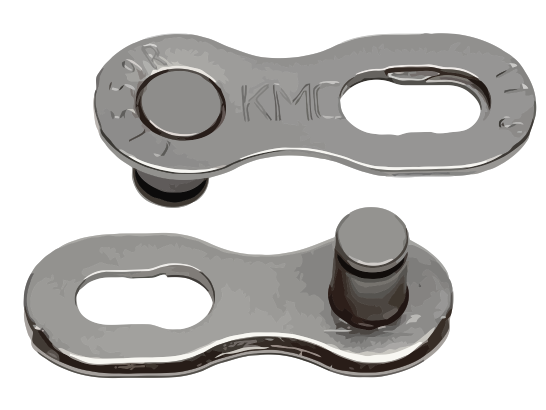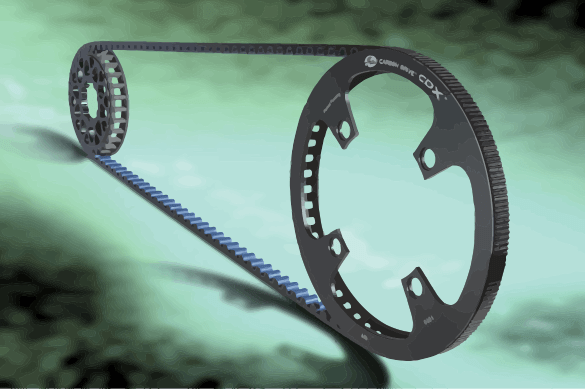Bicycle Chains: Everything You Need To Know
Table of Contents
A bicycle chain is made of many links connected together in a manner that allows it to bend as it travels through the drive mechanism. Technically, a bike chain is considered a roller chain. Without it, power from the pedals would not get transferred to the back wheel and there would be no motion. Most chains are made from alloy steel or plain carbon steel. Some are nickel plated in order to resist rust. For appearances, some chains are painted, but I don't recommend those as paint chips can get lodged in small crevices.
Not All Chains Are Created Equal
If you're a recreational rider you may not care too much and likely an average chain will do just fine. However, manufacturers will boost different chain qualities in attempts to lure you to purchase their brand. For example: lower weight, increased strength, better durability, and smoother shifting performance. As you might expect, these factors will influence the price, which can range from $20 for an average chain up to $140 for a high quality chain.
Major Bicycle Chain Manufacturers
According to Wikipedia, here are the main players around the world in the bike chain business:
- Campagnolo: Italian manufacturer of high end bikes.
- Rohloff AG: German manufacturer.
- KMC Chain: Headquarters in Taiwan.
- Shimano: Japanese-based.
- SRAM: USA.
- Wippermann: German manufacturer.
Chain Components
There are 4 distinct parts that make up a chain. These include: the roller, the pins/rivets, the outer plates and the inner plates.

Length
Most new chains will be long enough to fit all conventional bikes, but sometimes a few links may have to be removed for the best fit. A proper chain length for is one that will run properly when both the front and the back largest rings are engaged. However, at the same time the chain shouldn't be so long that when on the smallest rings (both front and back) it hangs. If you need to adjust your chain it's better to remove fewer links each time, rather than removing too many then trying to put them back on. And a master link will make your job much easier. If you have a bike that requires an extra long chain you may have to purchase to chains (make sure they are identical) and join them together. In the case of single gear bikes the chain will have to be an almost perfect length, so as to be tight enough so it won't sag but not so tight so that it restricts movement. The rear wheel can be adjusted slightly in order to obtain the correct chain length.
Thickness / Width
This is where things get a little complicated. Due to the large variation in gear numbers now available the chain width, the distance between the inner plates, has gotten smaller. The more gears a bike has the less space there is between the sprockets requiring that a narrow chain. However, using a narrow chain on a bike with fewer gears may mean that the chain will fall between the sprockets, as the distance will be too great for that particular chain. So, it is vital that a chain be chosen based on the gearing system and sometimes on the brand of the drive train.
There are basically two internal width sizes. By internal we are referring to the inside distance between the inside plates. These widths are: 1/8″ used on single speed and internal gearing bikes and 3/32″ for multi-speed bikes. However, with multi-speed bikes there are now variations on the external widths, which are referenced by the number of gears. That's why chains are sold based on the number of gears the bike has.
But wait, there's more! Each manufacturer may have slight design variations e.g. on the teeth of the chain rings. So always read the labels and make sure you get a chain that not only fits your number of gears, but is also recommended for the brand and type of drive train on your bike. This becomes more important when there are 10 or 11 gears.
Chain Care and Maintenance
Chain Wear
Since it is constantly coming in contact with the chainrings a worn chain will also wear out the rings. So make it part of your routine to check your chain regularly for wear. Keep in mind that it is much cheaper to replace a chain than it is to replace the chain rings. Most wear will take place in the pins and rivets, which will make the chain appear ‘stretched.'
Lubrication
Chains need to be cleaned and lubricated regularly, otherwise the riding will not feel as good and they will wear out faster which will also cause the chain rings to wear out faster. I suggest using a lubricant specifically designed for bike chains as opposed to lubricant for cars. First, clean the chain thoroughly with a degreaser, wipe it, apply the lubricant, allow the lubricant to flow into the small spaces, and then wipe with a dry rag. Lubrication is not needed on the outside surfaces of the chain. In fact, if there is too much lubrication it will simply collect dirt and grime quicker. There are different types of lubricants based on your type of riding, e.g. dry versus wet conditions. Do not lubricate a dirty chain as this will cause dirt to creep between the links and do not ride with a dirty chain as this will cause more wear and tear.
Removing Links

 Some chains have a master link that makes it easy to unloop the chain (see below about adding one). If there isn't a master link, you'll need to remove one of the pins/rivets. Then, to reassemble, you will need a new pin/rivet. It is not recommended that you reuse the same pin/rivet. When reinstalling make sure the chain is facing the correct way. Any writing on the chain plates should be facing outward so you can read it from the side you are working on. You will need a link removing tool for sure. If you're planning on buying one, I recommend you pay a bit extra and get a good one, it will be worth it. You may also choose to purchase a special chain link plier, which assists you in holding the chain in place and then stretching it once the new pin/rivet is in place.
Some chains have a master link that makes it easy to unloop the chain (see below about adding one). If there isn't a master link, you'll need to remove one of the pins/rivets. Then, to reassemble, you will need a new pin/rivet. It is not recommended that you reuse the same pin/rivet. When reinstalling make sure the chain is facing the correct way. Any writing on the chain plates should be facing outward so you can read it from the side you are working on. You will need a link removing tool for sure. If you're planning on buying one, I recommend you pay a bit extra and get a good one, it will be worth it. You may also choose to purchase a special chain link plier, which assists you in holding the chain in place and then stretching it once the new pin/rivet is in place.
Removable Master Link
 Having one a master link on your chain will make it a lot easier to remove and reinstall a chain. However, make sure you get one designed for your specific chain. And after installing, make sure it is engaged properly to avoid having the chain accidentally come apart while riding.
Having one a master link on your chain will make it a lot easier to remove and reinstall a chain. However, make sure you get one designed for your specific chain. And after installing, make sure it is engaged properly to avoid having the chain accidentally come apart while riding.
Carbon Belt Drive Chain

A new type of chain to the market is one with no ‘regular' links. It boasts to be maintenance-free in that it requires no cleaning and no lubricating. However, it is not laterally flexible and can only be used on single gear bikes or bikes with internal gearing. Also, different chain rings are required for use with this time of ‘chain'.
How Chains Are Made
If you're interested in how bike chains are made, check out this video:


 (2 votes, average: 4.50 out of 5)
(2 votes, average: 4.50 out of 5)
Is the coating on new chains used for corrosion protection, or is it also a lubricant?